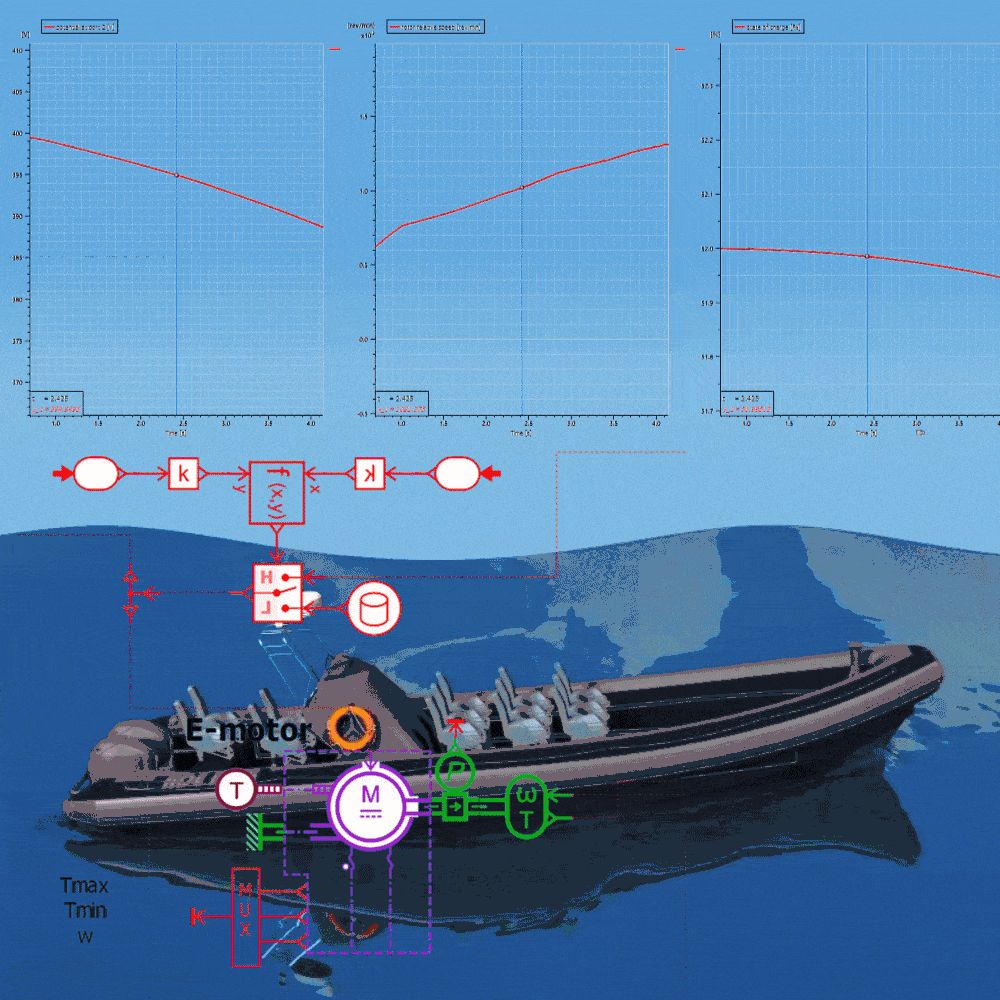Version 2022.1 is now available for download at Siemens Support Center and in this blog article we will familiarize ourselves with a few of the updates and added features within the software.
![]() Battery Test Protocol Generator
Battery Test Protocol Generator
![]() ROM Builder
ROM Builder
![]() Heat Exchanger Assistant
Heat Exchanger Assistant
Battery Test Protocol Generator

To describe and model a given battery’s electrical and thermal behavior, measurement data from battery test labs is often used in combination with a description of battery nominal capacity, current and voltage ranges and so forth. In an earlier version of Simcenter Amesim the Battery Electro-thermal Identification Tool was introduced, which allow users to generate advanced equivalent circuit models from test data in a convenient way. For an overview of this feature follow this link.
With release 2022.1 it is now possible to generate test protocols suitable for the identification routine with the goal of having sufficient and relevant data to characterize the electro-thermal behavior of a battery. Launched within the Battery Electro-thermal Identification Tool, this tool guides you through a few steps to define the required characterization tests. As you progress it is possible to preview all characterization tests by simulating the protocol using one of the pre-calibrated battery models within Simcenter Amesim. Once satisfied with the test procedure, it is a matter of exporting to an excel file, walking over to the lab to help out with connecting the equipment, and participating in the actual test.
Lastly, with the tests completed, results can be processed back into Simcenter Amesim using the Battery Identification tool to create a model performing in accordance with the tested battery’s electrical and thermal behavior.
ROM Builder

In version 2022.1, Simcenter Amesim’s ROM Builder has received some much-appreciated updates both in terms of productivity enhancements and new features. To learn more about the ROM capabilities inside Simcenter Amesim follow this link: Time Dependent Neural Networks with Simcenter Amesim’s ROM Builder
New in version 2022.1 is the capability to import time series in Simcenter Testlab’s native .LDSF format directly from Simcenter Testlab. This is beneficial for users of Simcenter Testlab because variables can be sorted by sampling rate automatically, and reduced order models can be created from test data in a more seamless manner. Apart from this new data import capability, a couple additional handy usability enhancements have been made to the ROM platform: CSV file import now supports cells that are empty or contains text, model inputs & outputs tags can be saved and used as default selection, and the documentation has been updated to contain model selection charts for guidance when selecting the appropriate ROM for a specific data set.
When generating a neural network from your data set it is usually more important to keep an eye on how well your mathematical representation, i.e. your model, predicts the behavior of your validation data, rather than how well it matches with the training set it uses. For this purpose, it is now possible to view both training errors and validation errors in the same plot. This option is available for both Static and Time Series projects and helps you understand the trade-off between optimizing your neural network further or stopping due to decreased validation accuracy.

In addition to rummaging through the documentation for information on how to select model type, the latest release now comes with an automated routine for model search and hyperparameter tuning called Model sweep. Again available only for Static and Time Series projects, this routine will automatically do a sweep of various models and model settings to produce the best matching ROM. However, a cautionary word is in order here, depending on your data complexity and available computational resources it might end up being quicker to follow the recommendations proposed by the model wizard.
Concerning the model wizard, this too has received some attention and now includes a new neural network template for soft dynamics. This template is intended for dynamic systems whose output dynamics are slower than its input dynamics, such as temperature measurements in a system with thermal inertia. In general, this seems to mean selecting a linear activation function for any recurrent neural network in your architecture.
Heat Exchanger Assistant (hex_assistant)
The Heat Exchanger Assistant is a dedicated tool for configuring and building heat exchanger models which became available in version 2021.2 of Simcenter Amesim. The intention with the tool is to have one single environment inside Simcenter Amesim to build, configure, and calibrate new heat exchanger models to match supplier data or test results. The Heat Exchanger Assistant Tool can be launched by left-clicking on the hex_assistant component in the Heat Exchanges category of the Thermal, Thermal Hydraulic, or Gas Mixture library trees.

The workflow is based around four steps, where the first step concerns global settings, such as choice of heat exchanger type and which fluids that are used. In the second step, geometrical data is entered, where in the case of a tube and fins heat exchanger involves setting how the tubes are arranged, number of tubes, fin thickness, etc. A graphical representation in the form of a 3D view is also provided to be able to assess the final configuration.
Determining heat transfer behavior of the heat exchanger is done in the third step called Calibration. The Calibration step is new in version 2022.1 and allows for setting and visualizing the required Nusselt correlations. Nusselt numbers for laminar and turbulent regimes can be established either automatically based on the geometry specifications, or manually defined by the user. In 2022.1 it is also possible to use an NTU (Number of Transfer Units) based regression routine to determine the coefficients and exponents in the Nusselt expressions. The regression tool requires user supplied data to work with, describing the heat transfer behavior of the heat exchanger’s two sides, and then performs an optimization to determine the Nusselt expression.

Lastly, to become familiar with how to use this tool two new demonstrator models, with accompanying documentation, have been made available in two steps: generation and validation.

We hope you have found this article interesting. If you have any questions or comments, please feel free to reach out to us on support@volupe.com
Author
Fabian Hasselby, M.sc.
+46733661021




